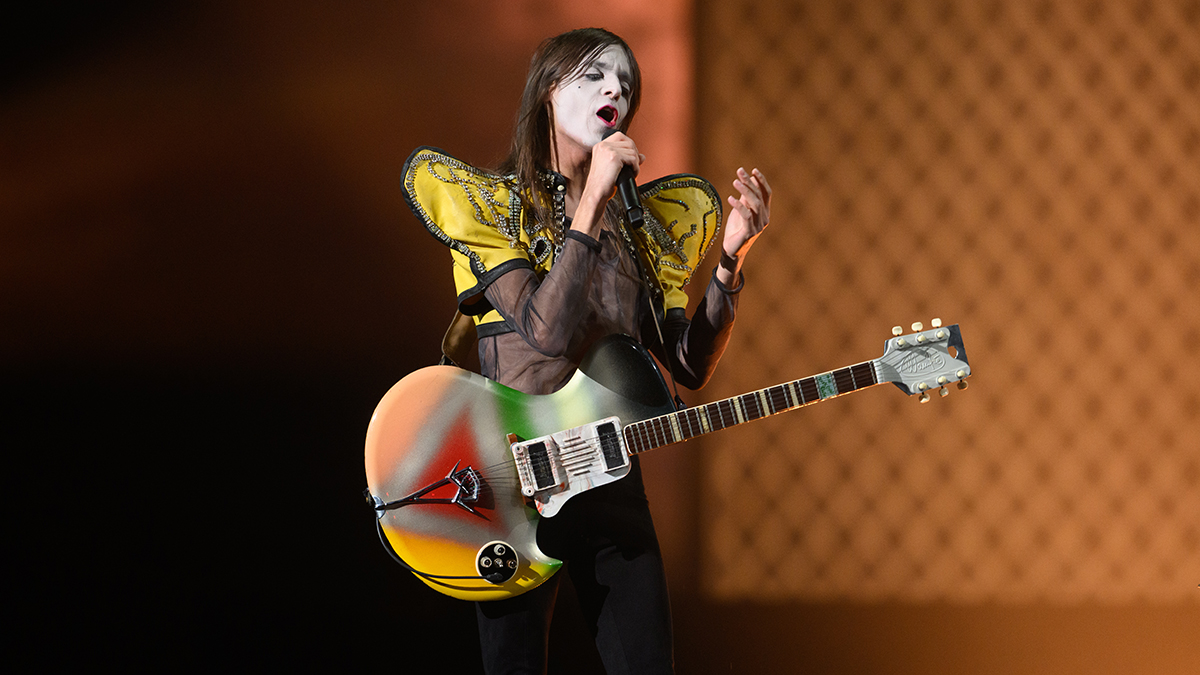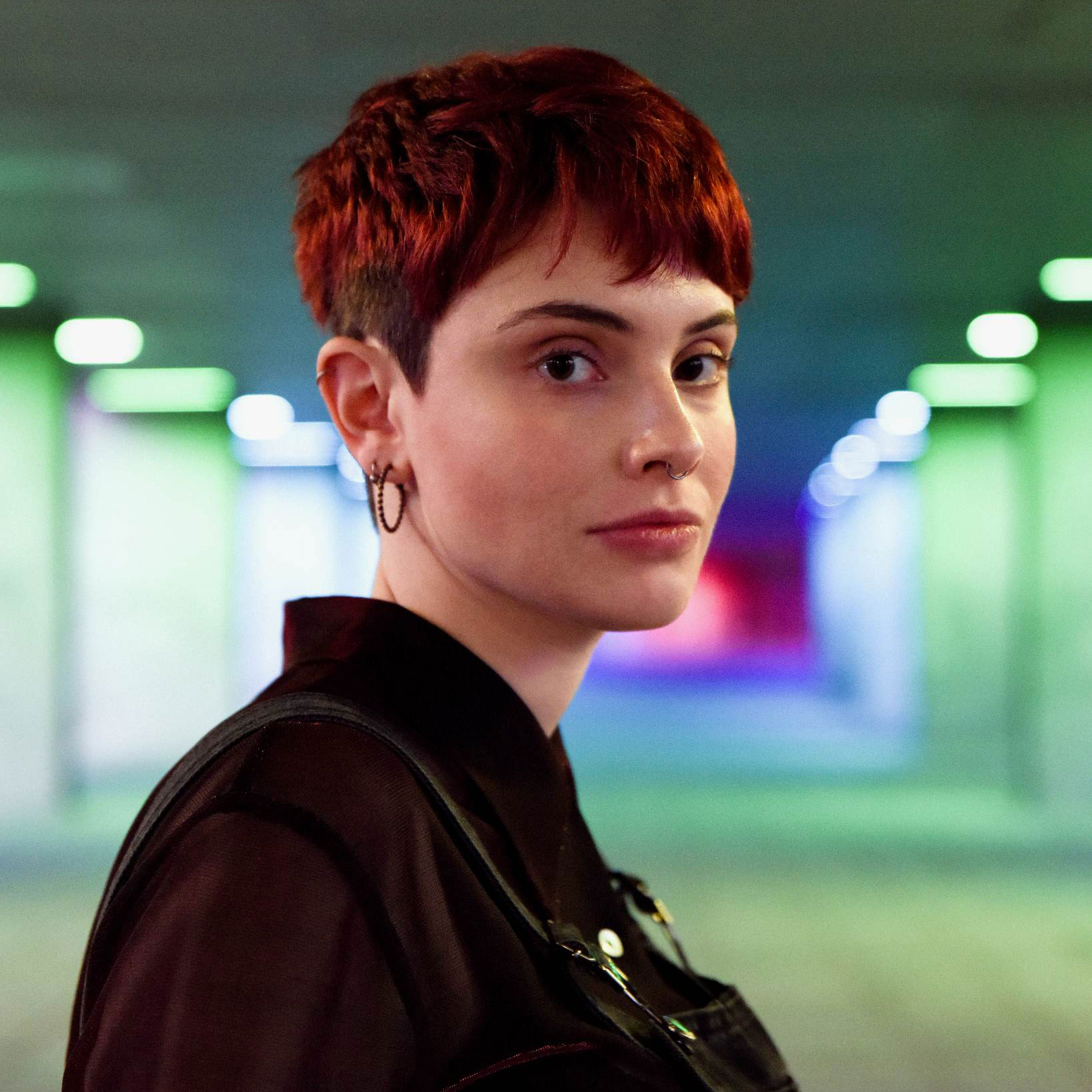“He once made a chicken walk on varnish, to transfer the prints of its feet onto the guitar's body”: The bizarre vintage guitar used in Italy's Eurovision entry has caught eyes all over the world
’70s-flavored singer-songwriter and guitarist Lucio Corsi opted for a rare guitar made by off-kilter Italian guitar manufacturer Antonio Vandrè Pioli – better known as Wandrè

Anyone who caught the annual flamboyant spectacle that is Eurovision would have noticed the very off-kilter guitar played by Italy's representative, the almost-straight-out-of-the-’70s singer-songwriter and guitarist Lucio Corsi.
A couple of late-night deep dives later, and the search for this elusive electric guitar led to the late Antonio Vandrè Pioli – also known as Wandrè – who, between 1957 and 1968, crafted the part-psychedelic, part-futuristic guitars that found fans in Bob Dylan, Frank Zappa, and even Ace Frehley.
The model that Corsi used is the Rock Oval – which, according to Marco Ballestri, a Wandrè enthusiast and biographer, was a tribute to “science fiction”, a genre that highly fascinated the guitar maker, in particular, UFOs, which, at the time, had captured the public's imagination due to the Roswell incident. The guitar also reflected a changing, post-WWII Italy, where the first science fiction films were allowed in the country.

“I met Lucio [Corsi] a couple of years ago, during a concert dedicated to Ivan Graziani [a popular Italian singer-songwriter and guitarist],” Ballestri tells Il Post. “He really loves the glam aesthetic and is passionate about psychedelic art, and when he discovered Wandrè’s guitars he was thrilled, as they are perfect for the style of his videos and shows.”
Therefore, when Corsi asked Ballestri and the other members of the Partigiani di Wandrè – a collective of Wandrè aficionados dedicated to honoring the luthier's legacy – to borrow the Rock Oval for the Sanremo Music Festival (the most popular song contest in Italy, from which the Italian entry for the Eurovision Song Contest is chosen), they “welcomed the proposal with great enthusiasm”, as the collective felt that it was “a unique opportunity to show these instruments to a large audience”.
Wandrè guitars have several distinct elements. The vibrant finishes are due to the guitar maker's penchant for collaboration, often involving other artists and friends in his work, and even opting for unorthodox methods. According to painter Gianfranco Borghi, a Wandrè collaborator, “He once made a chicken walk on varnish to transfer the prints of its feet onto the guitar’s body.”
Another Wandrè-esque technique was aluminum necks – predating Travis Bean by over a decade – which, before him, were used mainly to make instruments for army bands, which had to last and resist periods of high humidity. Wandrè had the foresight to use this material to make the guitar as durable and wear-resistant as possible.
All the latest guitar news, interviews, lessons, reviews, deals and more, direct to your inbox!
A post shared by Wandrè Guitars (@wandreguitars_official)
A photo posted by on
Another “brilliant” piece of engineering is the Wandrè bridge – the guitar strings are held in suspension by a system of slots, thus allowing them to vibrate for longer – and his version of the tremolo, created using a motorcycle spring.
According to Ballestri, while American manufacturers such as Fender became behemoths, partly due to the fact that their guitars can be easily repaired by any guitar tech, Wandrè's require specific expertise.
“Wandrè conceived his production in a completely different way – more artistic and less intended for mass distribution,” he asserts. “It is also evident from the terminology he used: he did not define his guitars as ‘instruments’, but as ‘sonic sculptures subservient to music.’”
Speaking of off-kilter guitar finishes, Todd Rundgren has recently revealed how he ended up owning Eric Clapton's “The Fool” SG – complete with the eye-catching paint job courtesy of Dutch design collective The Fool.
Janelle is a staff writer at GuitarWorld.com. After a long stint in classical music, Janelle discovered the joys of playing guitar in dingy venues at the age of 13 and has never looked back. Janelle has written extensively about the intersection of music and technology, and how this is shaping the future of the music industry. She also had the pleasure of interviewing Dream Wife, K.Flay, Yīn Yīn, and Black Honey, among others. When she's not writing, you'll find her creating layers of delicious audio lasagna with her art-rock/psych-punk band ĠENN.
You must confirm your public display name before commenting
Please logout and then login again, you will then be prompted to enter your display name.

